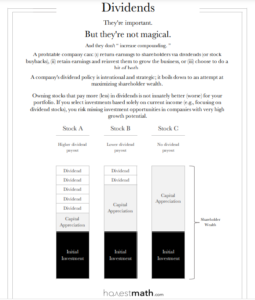By Bob Lai, Tawcan
Special to Financial Independence Hub
It’s never too early to start looking forward. I’ve been doing this on my site for some time and doing a bunch of assumptions and simulations on what our financial independence retire early might look like.
- Our financial independence assumptions
- Our financial independence assumptions – what about taxes?
- Revisit our financial independence assumptions
I also have interviewed many Canadians who are financially independent and/or retired early in my FIRE Canada Interviews.
Having some plans on your hands is better than no plans at all. Furthermore, having some quantitative targets available will allow you to set up different financial milestones and goals each year. Doing so will help you to stay focused and work your way to achieve them.
If you aspire to retire or semi-retire earlier than most people, how much do you need to retire early at age 40, 45, 50 or 55? Thanks to my friends at Cashflows & Portfolios, I have that answer today.
‘Traditional’ retirement vs. the ‘new’ retirement
For those not familiar with Cashflows & Portfolios, it’s a site started by two long time Canadian bloggers, Mark and Joe. Mark runs My Own Advisor, which I started reading before I started this blog. Joe was the brain behind Million Dollar Journey, which I have been following for over a decade.
All three of us believe we need to retire the term: retirement. To be more specific, we believe it’s time to change the ‘traditional’ definition of retirement. It is also important to make sure you know what you’re retiring to.
Back in the day, when you turned 60 or 65, and once you had grown tired of working by already clocking decades of company time – trading those years in the workplace for your workplace pension to supplement income for your senior years.
Well, workplace pensions are dwindling and more and more, pursuing retirement in any traditional sense seems rather unhealthy today. A traditional retirement can be unhealthy physically, emotionally and financially.
On an emotional level, retirement for some could lead to social isolation. Potentially, you’ve identified and linked your self-worth to your organization, your co-workers and your manager.
Retirement means you’re leaving your workplace but the organization will undoubtedly continue to work without you being there. Unfortunately, life just works that way; it doesn’t stop for anyone. So, I believe it’s important to maintain a modest level of stimulation at any age, including retirement.
Not remaining socially engaged with other people in retirement could lead to mental health struggles.
Finally, retirement is not cheap, financially. Unless you have a workplace pension (and let’s face it, many Canadians don’t, me included!), you’ll need to rely on your disciplined, multi-decade savings rate to maximize your retirement income stream at age 40, 45, 50 or 55 – by giving up your regular paycheque.
Sure, while there are other retirement income streams to enjoy eventually, like Canada Pension Plan (CPP) and Old Age Security (OAS), many readers of this blog probably don’t want to wait until ages 60 or 65 to tap those income streams respectively.
Let’s get one point straight, it’s a privilege to be able to retire early at age 40, 45, 50 or 55. Early retirement isn’t for everyone and those who can “retire” early typically enjoy some sort of privileges in their lives. Such privileges need to be highlighted more within the FIRE community.
The reality is that you do need to have a certain level of income to build up enough assets by your 40s so your portfolio can withstand some drawdowns in the subsequent decades. A relatively high savings rate combined with a certain level of income will help and is in my opinion crucial. Continue Reading…








